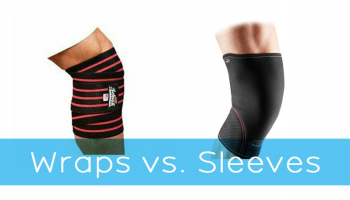Smith machine squats target the lower body muscles. Quadriceps, hamstrings, adductors, and even calves are activated during this exercise. The machine has been made as an alternative to barbell squats. It offers extra stability. But it is also used for muscle gain and muscle endurance.
These types of Smith squats are performed in various styles of training. From regular gyms to home gyms, the machine can easily integrate any type of fitness program. Those who haven’t used such a fitness machine squat before can easily confuse it with a squat rack.
However, the Smith machine bar is attached to the two sliding bars. At the moment, there’s an ongoing debate about the efficiency of these machine squats. Here’s what they have to offer and the risks they bring along.
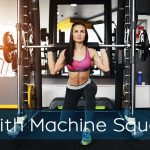
Contents
Smith machine squats benefits
Squats remain a compound exercise. Even when aided by the Smith machine, it still activates multiple muscle groups and multiple joints. As a result, it is highly efficient for various fitness purposes. Here are some of its benefits.
Loading the bar with more weight
Since the bar is anchored in 2 points on the machine, the squat can be performed with higher weight. This means strength gains can improve as well. Those seeking to improve muscle density or to gain muscle may consider the exercise as a result.
Activates legs and core muscles
Many believe Smith machine squats are not as efficient as free weight barbell squats. This is only applicable to some muscles (gastrocnemius, biceps femoris, and vastus medialis). From a purely scientific point of view, free weight squats only benefit those seeking to improve strength around the knee area. Others might load the bar more on the machine to get better strength improvements.
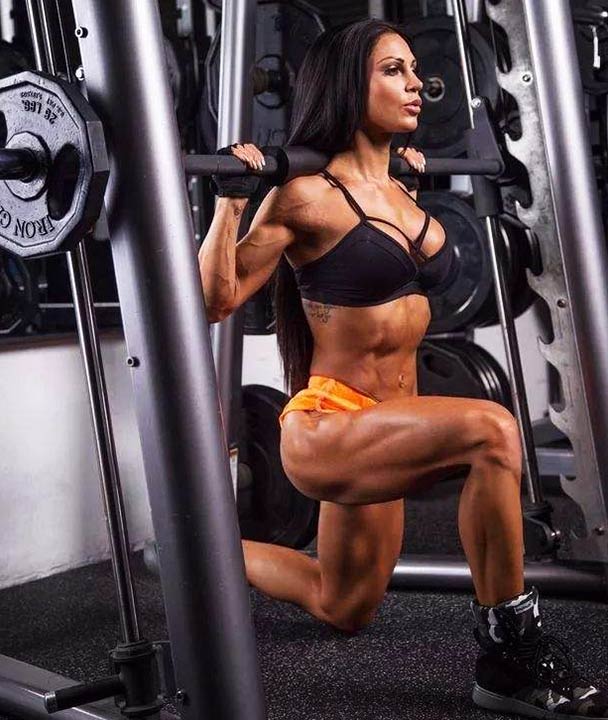
No spotter – the bar racks at any position
Since the bar has 2 attached hooks, it can be racked at any stage of the exercise. Even when closest to the ground, the bar may still be easily racked. This eliminates the spotter’s role.
But this benefit also means the trainee can increase the weight more. Since the bar racks quickly, pushing the exercise to failure becomes palpable. All it takes to take the bar off the back is a simple wrist twist.
Smith machine squats – the drawbacks
As with all fitness equipment, Smith machines have limitations as well. Some of them might apply to most trainees. Here’s a shortlist of possible limitations.
Inactive small stabilizer muscles
Having the bar partially stabilized means smaller muscles are not as involved as they should. The squat comparison to a free weight alternative proves this to be the case. Those who want to develop well-rounded muscles need to consider free weight squats in addition to Smith machine squats.
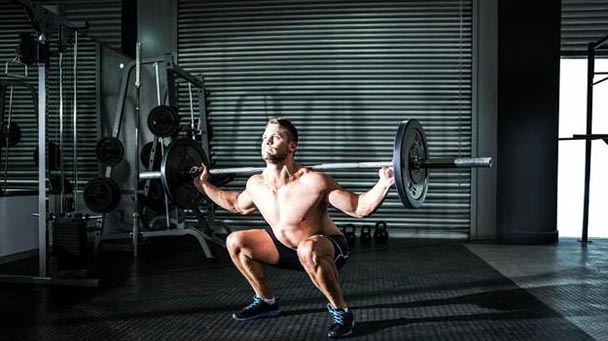
Not efficient for gaining knee strength
As seen in the Smith Machine Squats vs. barbell squats study quoted above, knee strength has to suffer from a Smith machine. Those who want to have stronger joints, particularly trainees looking for maximum muscle gain see this as a problem. Those who simply want to build muscle endurance might think otherwise.
How to perform Smith machine squats safely
This being said, how do we perform squats on a Smith machine? There are a few things to remember with these squats. But only one is the most important, the right position. As long as the back is neutral and not arched, the risk of injury on the exercise is considerably lower. Angled Smith machine squats where the upper back leans forward or backward are detrimental to the spine’s health.
Set the correct bar height
First, the bar needs to be adjusted to the correct height. The main advantage of the Smith machine is that it allows various height points, for users of various heights.
The bar should be right beneath the shoulders’ level. This favors easier use as the bar is removed from the rack. Placing the bar too high is an issue here. Trainees should not tip their toes to lift the bar.
Find the correct feet position
The correct squat position requires a degree of flexibility in the knees and ankles. Ideally, the feet should stay shoulder-width apart. The correct position also involves pointing toes slightly outwards. This favors natural movement where knees follow the direction of the toes.
Try out the exercise without weight
At first, a quick warm-up is recommended. This applies to experienced lifters as well. Performing the exercise without weights is the best method to warm up muscles and joints.
Keep the spine neutral
The most important posture tips start at the position of the spine. It should stay neutral. An arched back is a proven mistake that leads to painful injuries.
Low back and upper back-arching should be avoided. This might involve lowering the weights to maintain the right squatting position.
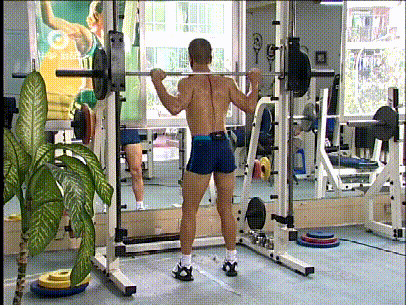
A typical mistake those with poor ankle mobility make here is arching the back when closest to the ground. This is made to compensate for the reduced ankle mobility which mainly causes the heel to rise when closer to the ground.
Add more weight
Adding weights to the bar is done progressively. As with any other exercise, strength builds in time. Extra weights on the bar should be added step by step. Those who can’t lift any weight can start with straps anchored to the bottom of the Smith machine.
Use knee wraps
Knee wraps increase external support for increased joint support and reduce the potential for joint injury. It can help the lifter by reducing joint friction and improving knee comfort.
A few words on shoes
Most shoes are fine for squatting. However, flat outsole shoes are the best for a correct position during the exercise. Extra-cushioned shoes such as running shoes don’t offer too much stability with higher weights. This is why flat sole shoes are the best option.
Safety tips
There are a few methods of mastering the Smith machine as a beginner. They are already included in most machines, as is the case of adjustable height stoppers.
- Using stoppers
These stoppers can be placed anywhere along the sliding bars. If the weight is too heavy, the bar is stopped from dropping. This acts as a spotter and minimizes injury risks, especially when increasing the weight on the bar.
- Using a bench
A simple workout bench is placed underneath the bar. The idea is for it to act as a safety measure in case there are no stoppers on the machine. This also allows new users to get accustomed to their bar descent as it set a point to reach with every squat movement.
Frequent mistakes to avoid
Once these basics are in place, trainees can begin the legs workout on the machine. Here are 4 common mistakes to avoid during the exercise.
- Not paying attention to the spine’s position
The spin should be neutral at all times. It can be easy to forget about its position after the first repetitions. But the position of the spine dictates the sustainability of the exercise in the long-term. An incorrect spine position leads to all types of injuries.
- Placing the bar higher than shoulder height
The bar should rest on the shoulders and not higher on the neck. When placing the bar on the shoulders, a comfortable point should be found. This is not the case with the bar placed higher up the neck where it puts pressure on the vertebrae.
- Not keeping feet flat on the floor
The feet should stay flat on the floor for the entire duration of the exercise. This is why finding the right center of gravity is also important. Having the feet too far in front places too much pressure on the heels, which makes the toes lift during the exercise. Having the feet too far behind the bar moves the center of gravity forward and the feels can raise off the ground.

- Keeping the knees close to each other
Knees coming in closer to each other when squatting are another frequent mistake. This bad form is certainly leading to knee joint injuries. To prevent this from the start, the feet should be grounded shoulder-width apart. The knees need to be orientated outwards as are the toes.
FAQ
Is it bad to squat on a Smith machine?
Squatting on the Smith machine is not bad when made with the right form. Unlike with other machines, there’s a lot of attention to be given to the right technique. The positioning of the legs and the back is important.
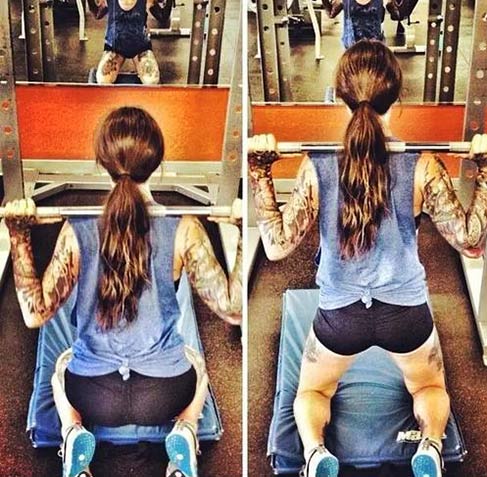
Is it easier to squat on a Smith machine?
It can be easier to squat on the Smith machine as seen in studies. This is mainly due to the extra stabilization the machine offers to the bar.
What muscles do Smith machine squats work?
Core muscles, glutes, quadriceps, and calves are involved in Smith machine squats. These muscles are some of the largest in the body and they can show considerable strength improvements in time.
Can I deadlift on a Smith machine?
Deadlifts are also possible on the Smith machine. The same principles of neutral back posture apply to stay injury-free.
Can I do Smith machine lunges?
Those who want to stay away from squatting high weights have the lunges smith machine exercises alternative. This considerably reduces the weight on the bar. Lunges can also be performed on the Smith machine.
Chris Jordan
Hey there, I'm Chris Jordan! I'm a certified personal trainer and dietician with over 11 years of experience in the fitness industry. I've helped thousands of people achieve better physical and mental health. When I'm not working, I love spending time with my dog.

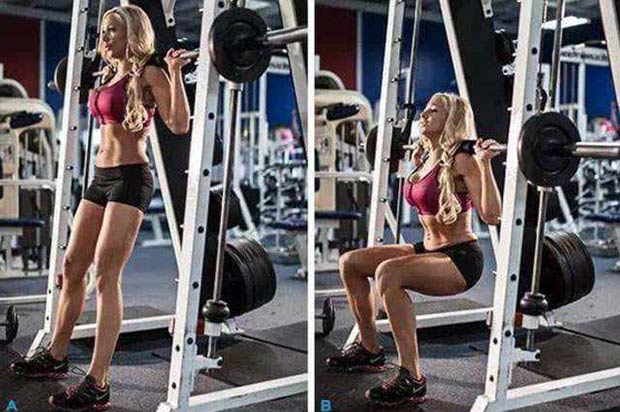


![How to clean adjustable dumbbells? [e.g. Bowflex and PowerBlock]](https://lafitness.reviews/wp-content/uploads/thumbs_dir/how-to-clean-adjustable-dumbbells-20hj5my2115uuagb8wtleoeoy6iq4hluixjutukgq84k.jpg)
![What Weight Kettlebell Should A Woman Use? [Potential Risk]](https://lafitness.reviews/wp-content/uploads/thumbs_dir/kettlebell-weight-20h09n1ob4qpwvg2czx13h5puovp8ffodpar6eae049w.jpg)
![Focus T25 Workout Schedule: Free Calendar and PDF [Video]](https://lafitness.reviews/wp-content/uploads/thumbs_dir/focus-t25-workout-1zexaab0devemj1blzta5ya8wgyalv0bq9qv34ld2v8k.jpg)
